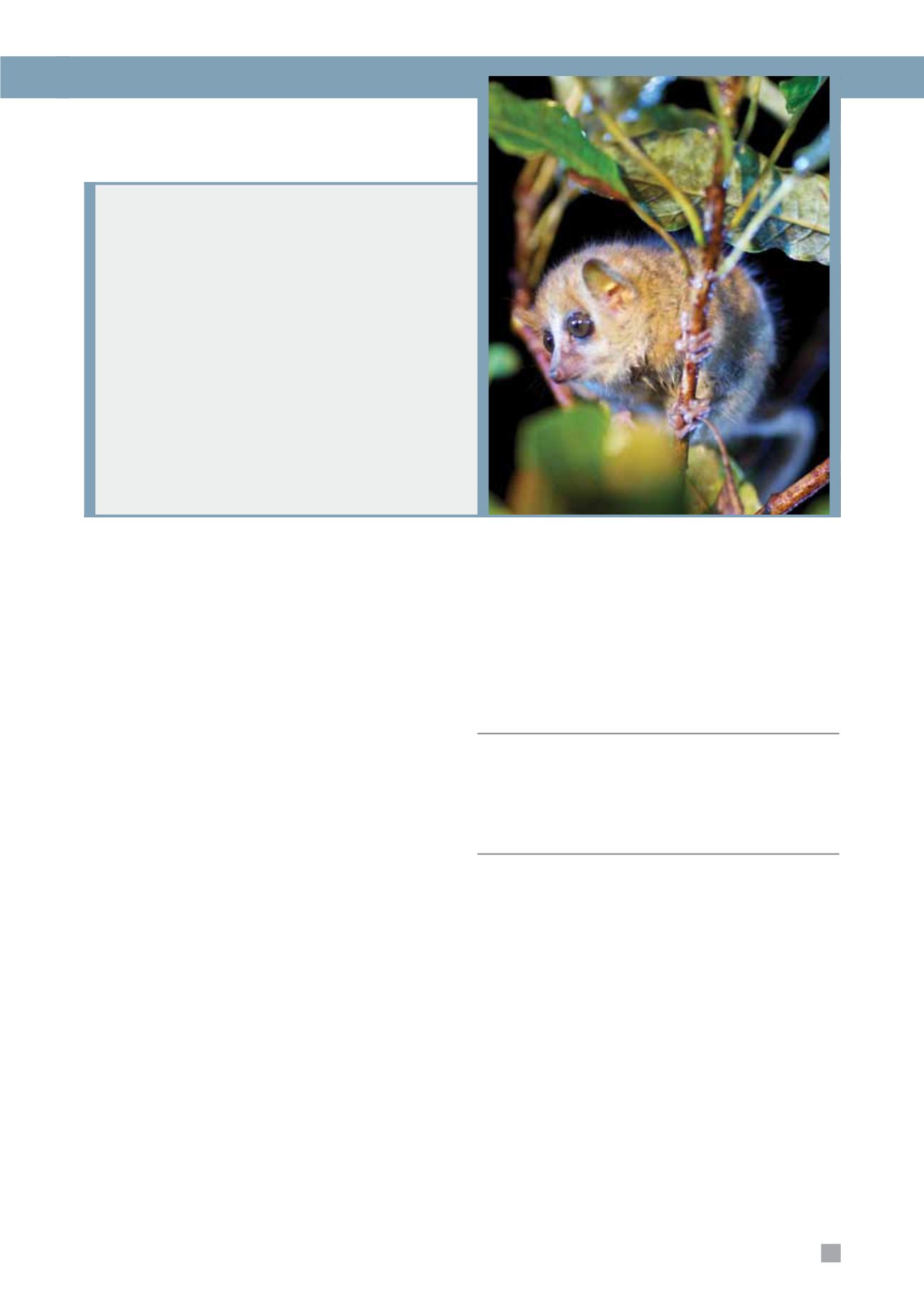
2011
AMBATOVY SUSTAINABILITY REPORT
19
Environmental Performance
Ambatovy has carried out radio-tracking studies on lemur
populations within the mine site and surrounding forests
since 2007. This methodology enables the monitoring of
lemur movements and behaviour and allows us to assess
whether these animals are able to adapt to new home ranges
in the adjacent conservation forests. During 2011, capture
and marking activities were focused on nocturnal species,
with 62 captured and collared for the first time. The radio-
tracking data collected since 2007 shows that groups are
able to establish new home ranges in the adjacent forests
after moving during a clearing process. These groups are
successfully breeding: 30 births among four species were
observed in 2011.
We have also continued to develop our biomedical monitoring
system to assess the health trends of the lemur populations.
Since 2008, 150 biomedical samples belonging to eight
species have been analyzed. Over the course of the last year,
21 individuals from four different species were examined. The
analysis revealed that the majority of health status parameters
were within normal ranges, including similar blood nutrient
levels, to other lemur populations found outside the area
of impact.
In our 2010 report, we highlighted the innovative lemur bridge
program, put in place during construction, to ensure lemurs
had continuous access to forest habitats that were bisected
by the pipeline or the mine roads. Lemurs can now avoid
vehicle traffic and maintain habitual home ranges by using the
bridges. While observers are only able to monitor a fraction
of the crossings that take place, a steady increase in bridge
use has been reported. There were 53 crossings observed
in 2011, compared with only 34 in 2010. This indicates that
the lemur population is growing accustomed to the bridges
and that lemurs are able to move freely between sectors
of habitat. In particular, there was a substantial increase
in observed crossings during 2011 by diademed sifakas
(
Propithecus diadema
), an endangered species.
Lemur Population Key Indicators
Indicator
2010
2011
IUCN-listed lemur species in the area
13
13
surrounding the mine*
Lemurs given radio collars**
N/A
62
Biomedical analyses
0
21
Bridge use observations
34
53
Lemur births observed***
13
20
Lemur deaths observed***
10
16
* 13 confirmed with the possibility of 16 depending on the results of ongoing genetic testing.
** Includes lemurs captured and marked in the latter half of 2010.
*** Observed in the mine footprint and conservation zones.
Our continual monitoring of the lemur population, particularly
endangered species, is essential to measure the impact our
activities have on these populations in the area around the
mine. During the 2011 monitoring campaigns, Ambatovy’s
Environment team was able to contribute observational data
to enhance the scientific understanding of these animals and
ensure that future operations take into account their unique
behaviour and characteristics.
Priority Species
Priority species are identified based on two primary criteria:
first, species that are recognized by the IUCN as endangered
(EN), critically endangered (CR) or considered so by experts;
second, species are identified as priority species when known
to be only from the mine region (regionally endemic) or mine
footprint (locally endemic). Priority species are given special
attention in Ambatovy’s biodiversity management actions.
Other relevant criteria include:
3
Species integrally protected under national law.
3
Species listed in the Convention on International Trade in
Endangered Species of Wild Fauna and Flora (CITES).
3
Species considered a concern by Malagasy or international
specialists.
For detailed information, see Appendix 2: Priority Species.


